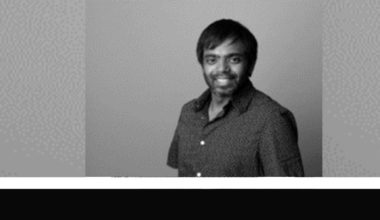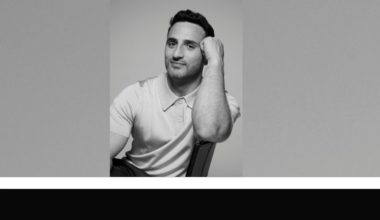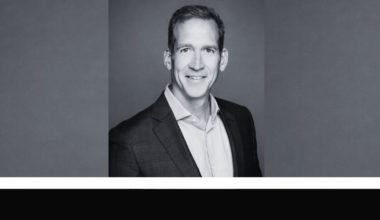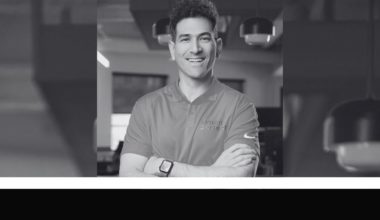Steve Tan is the co-founder and CEO of LeapVista, a transformational business education company. Through LeapVista, Steve wants to educate and train the next generation of digital entrepreneurs, equipping them with the practical skills and mindset needed to succeed in their e-commerce journey. Steve and his brother Evan formed the Super Tan Brothers Group, a global group that consists of e-commerce, software, education, logistics, and marketing agencies, with over 400 employees across six countries.
Leveraging his 14 years of experience in the e-commerce world, Steve has been able to build an eight-figure business using the dropshipping model. As his way of giving back, he founded LeapVista to share his knowledge so entrepreneurs can benefit from the lessons that he learned the hard way.
What is LeapVista all about?
LeapVista is a global education firm that delivers world-class e-commerce education and online learning experiences worldwide. LeapVista’s mission is to offer universal access to e-commerce education so that everyone has an opportunity to learn, upskill themselves, and transform their lives. We prepare learners to be their own entrepreneurs and excel in the e-commerce industry through personalized programs.
Tell us a little bit about your background and how you started your business?
We founded the e-commerce education company LeapVista in 2019. We noticed that there were a large number of so-called gurus with no practical experience in e-commerce teaching their students outdated strategies. Being in the e-commerce space, we know who’s the real deal and who’s not. And there’s a drastic number of people who are just fake gurus compared to practitioners. This is why we felt that we need to come in and fill the gap because we’ve seen so many people being burned by fake gurus.
Tony Robbins said there are six human needs and one of them is contribution or a sense of service and focus on helping and supporting others. This is my way of contributing back to society. As an entrepreneur, as a human, that’s my way of giving back in terms of sharing my knowledge and training more people with what I believe in and what I’m good at.
I’m a practitioner. I still run my own e-commerce business at the same time. I believe that it’s very important for me to be able to contribute and help more people. Of course, we’re not running a charity, but in a sense, we want to selflessly serve and contribute while profiting from what we’re doing. So this is why it’s important for me as an entrepreneur to give back to society
How has the pandemic affected you or your new business?
The pandemic initially negatively impacted LeapVista because we used to run offline events and classes. The COVID-19 pandemic affected us because we aren’t able to conduct any live trainings anymore in our offices. It affected us because it disrupted our business model. It didn’t allow us any room for survival if we didn’t innovate or if we didn’t change our model. So that was the biggest problem that we encountered since we started LeapVista.
What was the biggest problem you encountered starting up and how did you overcome it?
We shifted and we changed our business model from being offline to online. Initially, we didn’t know if it was going to work because being a local Singapore e-commerce education company, a lot of the students preferred face-to-face classes, especially the older generation students.
We thought that people wouldn’t pay so much or people wouldn’t want to come to online classes. So that was the biggest problem: shifting online. Changing our business model to online classes actually allowed us to continue with our business at the same time with no more restrictions on the number of students per class. So that’s how we changed our business model in order to survive.
What were the top mistakes you made starting your business and what did you learn from it?
I think our biggest mistake was putting all our eggs in one basket. We put all our efforts into one of the new offers and even though it wasn’t proven and tested, we focused too much on that. As a result, we lost money.
We didn’t apply the 80-20 rule. We spent 80% of our time working on a 20% offer. So the whole ratio was wrong. We should be spending 80% of our time on what’s working and 20% of our time on R&D, testing out new offers. Once we realized that, we fixed the ratio and we were good. So I think that’s one of the biggest mistakes that we did when we were starting out.
What is one thing that you do daily to grow as an entrepreneur?
I’ll read for at least 30 minutes every single day to ensure that I’m learning something new. I try to diversify what I’m reading. I read a variety of topics such as personal development, spiritual, mental, personal growth, and business marketing.
How do you manage running a business while traveling and being in a different country?
I think with all the technology now available, it allows us to manage remote teams with ease. For example, Zoom and Slack, are the tools that we use to manage people and team members from all over the world. With all these new tools coming out, it makes remote working much more feasible compared to the early days.
I think it’s important for entrepreneurs to learn how to outsource to the Philippines and other countries because, in places like Singapore, living expenses and business expenses are pretty high. So if the entrepreneur knows how to outsource to other countries like the Philippines, they will definitely be much more competitive and be able to save costs as well.
What are three books or courses you recommend for new entrepreneurs?
I would recommend The Hard Thing About Hard Things, Delivering Happiness, and The Subtle Art of Not Giving a F*ck.
What was your first business idea and what did you do with it?
My first business idea was trying to create a digital product that’s translated for the Chinese market. At that point, I was trying to teach people how to earn money from AdSense, how to create websites, how to earn profits from AdSense and Google.
It flopped totally because I was trying to sell it to the China market and that market wasn’t ready because there were no good digital payment solutions at the time when I launched it. And people in China back then were used to reading physical copies and they didn’t really like studying online.
What are you learning now? Why is that important?
I’m learning more about investing and venture capital nowadays because I feel it’s important for me to be able to raise funds and acquire companies in order to grow the business even more. So, that’s what I’m studying now.
What is the one thing you wish you knew before starting LeapVista?
I wish I knew that every market is unique to its own. I wish that we did more market research before pouring resources into trying to penetrate the Australian market. I think what I learned from this was that it’s always critical to be proactive in understanding and researching the market that we’re going in, rather than diving in right away without any constructive data points because there’s a risk that things might go sideways.
By conducting market research, with analysis of the market and consumer behavior, it doesn’t mean that our venture is going to be 100% percent successful, but I think having all these data points would have helped us make better data-driven decisions.
What has been your most effective marketing strategy to grow your business?
Placing Facebook ads is definitely the most effective way of marketing a company right now.
If you only had $1000 dollars to start a new business, knowing everything you know now, how would you spend it?
I would definitely start a dropshipping business right now. I would use the $1000 dollars mainly for driving traffic to the website.
What’s your best piece of advice for aspiring and new entrepreneurs?
It’s not easy to get a mentor, but if they are able to get a mentor, I think that’s definitely the best route for entrepreneurs. Because having a mentor who has been there, done that will be able to help shortcut your success. The mentor would be able to give them feedback and advice in times of need. I think it’s something that would give them a significant advantage.
I think my best piece of advice for aspiring entrepreneurs would be for them to really understand why they want to become an entrepreneur. Because entrepreneurship sounds cool but a lot of people don’t know what they’re getting into. So a lot of people give up in the middle of being an entrepreneur because they don’t know what they’ve gotten themselves into.
It’s not always going to be like smooth sailing. Being an entrepreneur means that you have a very strong drive. You need to know: What’s your why? Why are you doing this? What’s your mission? What’s your vision for your company? Why do you want to become an entrepreneur? Are you trying to change the world? Are you trying to disrupt a space?
Those are the reasons that will support and push you when challenges come your way, when things get tough. And a lot of people don’t know that. A lot of people just say, ‘I want to be an entrepreneur because I want to make money.’ Of course, making money is important, but not knowing why you want to make money, or not knowing why you started this company, is going to come back and bite you in the future.
Because when challenges come—and they will definitely come—you won’t be able to easily solve that. I think that that would be my best advice for aspiring entrepreneurs: really spend time to understand and ask yourself: Why are you doing this? What do you want to achieve? What outcome do you want by starting this business? What’s your vision in becoming an entrepreneur? So be clear about these and a lot of things would just fall in place.
What’s a productivity tip you swear by?
Having a disciplined morning routine is something that would boost your productivity by planning your week and planning your month ahead. I think it’s something that helps a lot. It helps a lot for me.
How do you personally overcome fear?
I don’t really overcome fear because I’m very clear on what I want. Fear is only there when you’re uncertain, when you don’t know what to do, when you don’t know where to go.
When you have absolute clarity in whatever you want to do, I think fear is just part and parcel of the journey. But if you have strong enough reasons, strong enough whys, you can always overcome your fears.
You can’t overcome your fear unless you have a strong enough reason to do so. If I fear failure, then my reason is not strong enough. And if it’s only for money, then you think, ‘I don’t want to risk doing this thing.’
But, like for LeapVista, we are very clear that we want to contribute and we want to help as many people as possible. That reason is a very strong why for us because we want to change people’s lives. We want to be able to help as many people as possible. That becomes very clear and our vision is to empower more and more people to take up entrepreneurship. And that is our way of giving back to society. So whatever challenges that come our way, we can overcome them because we are very clear in where we want to go. So I think fear is always going to be there. So just convert fear into drive for you. If you’re clear regarding your vision, you could be very driven in what you do.
Besides the obvious social media tools available, what are the top 3 most useful tools or resources you’re currently using to grow your business?
ClickUp is one of them. ClickUp is a productivity and collaboration tool. It allows us to collaborate with different teams. It allows us to track a lot of things in the company. It allows us to keep ourselves organized.
Another important tool is Slack. It allows us to connect and communicate with all our team members—it doesn’t matter where they are, it’s all centralized here.
Of course, Zoom is definitely very critical, especially during the pandemic. It allows us to have virtual, online meetings no matter where people are. So I think these are the three tools that we use most right now to run the business.
How is running a company different from what you thought it would be?
In my younger days, like in my early twenties, I always thought that starting a business was all about just making money. But nowadays, when I become more and more successful and when I started to understand more, it became a bit different. Besides making money, we also have to think of the people. We have over 500 people on our payroll. So nowadays, I’m thinking: ‘That’s 500 families that I have to take care of.
I’ll think very carefully before I do any major drastic changes to the company, letting go, hiring people. Because of my decisions, people’s lives are going to be affected if we fire someone. So it’s very different. The way I think right now, it’s more like asking: ‘How can our company make an impact? How can our company bring value to our customers? How can our company bring value to our employees, our stakeholders, our shareholders?’ It’s not just about me, me, me anymore.
When I started out, it was all about myself. It’s all about me making money. Now it’s about growth—company growth. How can we all grow together? How can we all provide value to the people who are working with us? So that’s the difference between running a company in the past to running a company right now.
How can readers get in touch with you?
You can connect with me via LinkedIn or Instagram or Facebook. Visit us at leapvista.com to learn more about e-commerce.
Random Interview: Mar Pages – Grow a Solo Female Travel Community When Borders are Closed








